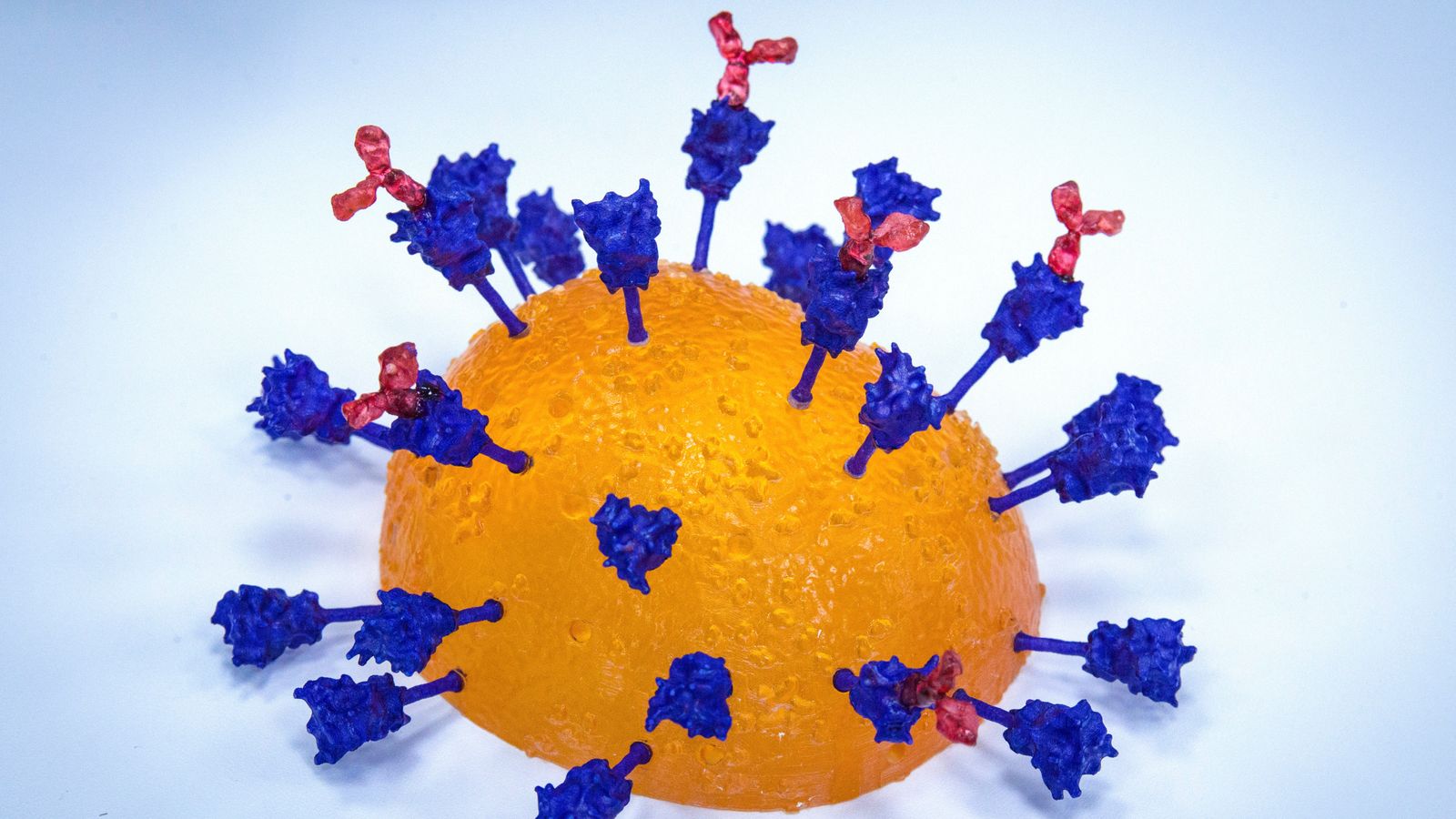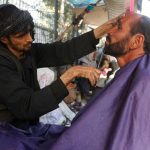Antibodies in COVID-19 patients remain high even nine months after infection, according to a landmark study which tested almost the entirety of a small Italian town.
The study, published in the journal Nature Communications, focused on the town of Vo which became the centre of the country’s coronavirus pandemic in February 2020 when it recorded Italy’s first death.
Now, researchers from the University of Padua and Imperial College London have tested more than 85% of the town’s 3,000 residents for antibodies against COVID-19.
Live COVID updates from the UK and around the world
Please use Chrome browser for a more accessible video player
The researchers found that 98.8% of people who had been infected in the first wave of the pandemic were still showing detectable levels of antibodies nine months later, regardless of whether their infection had been symptomatic or not.
Residents’ antibody levels were tracked using three different “assays”, or tests that detected separate kinds of antibodies which respond to different parts of the virus.
The results found that all of the antibody levels declined after the body overcame the infection, but the rate of decline was different depending on the assay tested.
The team also found a number of cases in which antibody levels had increased among some residents, suggesting potential re-infections of the virus had provided a boost to the immune system.
Imperial College London’s Dr Ilaria Dorigatti said: “We found no evidence that antibody levels between symptomatic and asymptomatic infections differ significantly, suggesting that the strength of the immune response does not depend on the symptoms and the severity of the infection.
“However, our study does show that antibody levels vary, sometimes markedly, depending on the test used. This means that caution is needed when comparing estimates of infection levels in a population obtained in different parts of the world with different tests and at different times,” added Dr Dorigatti, the lead author of the study.
The team also investigated how the infection spread to household members and found that there was a 25% chance of the virus being passed on in this fashion.
Surprisingly, the research also found that the majority of transmissions, 79%, were caused by 20% of infections.
“The large differences in how one infected person may infect others in the population suggests that behavioural factors are key for epidemic control, and physical distancing, as well as limiting the number of contacts and mask wearing, continue to be important to reduce the risk of transmitting the disease, even in highly vaccinated populations,” the researchers added.
Another aspect of the study was an analysis of two mass PCR testing campaigns conducted in February and March, as well as the antibody surveys in May and November, which allowed them to analyse the impact of various control measures.
This data showed that, in the absence of case isolation and short lockdowns, manual contact tracing alone would not have been enough to suppress the epidemic.
Project lead Professor Andrea Crisanti, from the University of Padua, said: “Our study also shows that manual contact tracing – the search for positive individuals on the basis of known and declared contacts – would have had a limited impact on the containment of the epidemic, had it not been accompanied by a mass screening.”
Dr Dorigatti added: “It is clear that the epidemic is not over, neither in Italy nor abroad. Moving forward, I think that it is of fundamental importance to continue administering first and second vaccine doses as well as to strengthen surveillance including contact tracing. Encouraging caution and limiting the risk of acquiring SARS-CoV-2 will continue to be essential.”






















